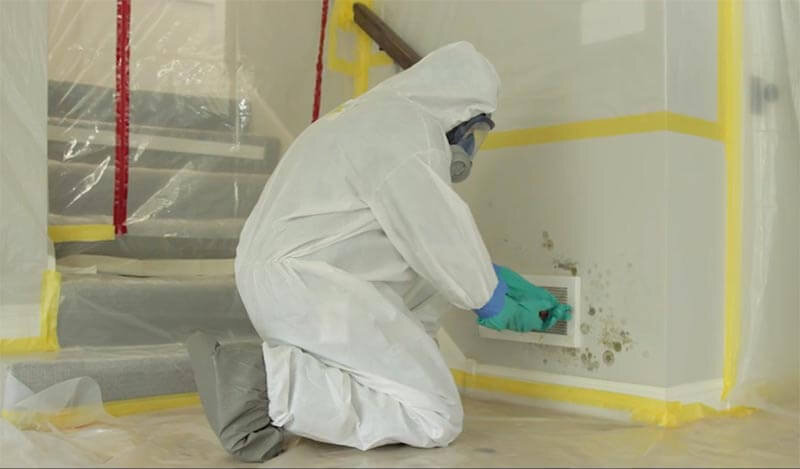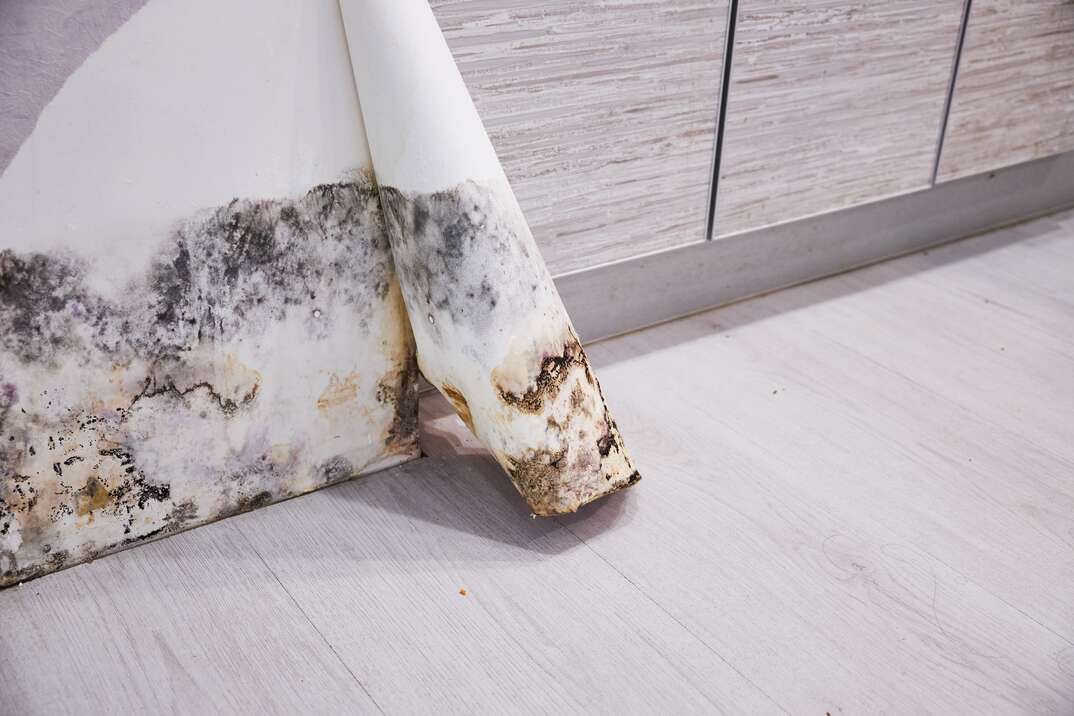Trick Steps for Effective Message Mold And Mildew Remediation
Effectively completing mold and mildew remediation is a diverse procedure that needs attention to detail and adherence to certain procedures. These steps not only validate the success of the remediation initiatives yet also add to protecting against future mold development.
Evaluation of Treated Locations
Upon completion of the mold removal process, a detailed evaluation of the dealt with locations is critical to guarantee the performance of the removal efforts. This assessment offers as a crucial action in the post-remediation stage to verify that the mold elimination and cleaning procedures achieved success in getting rid of the mold and mildew problem and restoring a safe interior environment. The evaluation must be performed by certified professionals who have the competence to examine the remediated locations meticulously.
These consist of visual assessments to examine for any type of signs of mold and mildew growth or water damages, wetness degrees to verify that the area is totally free and completely dry of excess moisture that could advertise mold re-growth, and air top quality testing to ensure that the interior air is safe to take a breath. Additionally, the examination may entail utilizing specialized tools such as dampness meters and thermal imaging video cameras to detect concealed mold or dampness pockets that could lead to future mold and mildew problems if left unattended.

Wetness Control Actions
Effective moisture control actions are important for avoiding mold growth and preserving a healthy and balanced interior atmosphere. To accomplish this, it is vital to resolve resources of dampness within the structure. Correct air flow is vital to regulating moisture degrees. Setting up exhaust fans in kitchens and restrooms can help remove excess moisture. In addition, making use of dehumidifiers in wet locations can aid reduce humidity levels, making it harder for mold and mildew to flourish.
On a regular basis checking and preserving the building's exterior can also protect against wetness intrusion. After mold remediation. Making certain that seamless gutters are clear, downspouts direct water far from the foundation, and the roof covering is in excellent condition can aid avoid water from permeating right into the building. Appropriately sealing doors and windows can likewise aid keep moisture out
In situations where water damages happens, punctual action is essential. Any spills or leaks ought to be cleansed and dried within 24-48 hours to stop mold growth. Making use of moisture meters can assist identify covert resources of water and make certain complete drying out. By implementing these dampness control measures, the risk of mold and mildew reoccurring can be considerably minimized, developing a healthier indoor atmosphere.
Proper Ventilation Analysis
An integral facet of making sure a healthy interior atmosphere message mold and mildew remediation is performing a complete assessment of the air flow system. Proper air flow assessment plays a crucial duty in stopping future mold development and maintaining air high quality within the damaged area.
In addition, examining the ventilation system includes checking out the circulation of air throughout the area to recognize any locations of inadequate flow where dampness and contaminants might gather. Appropriate ventilation not just aids in controlling humidity degrees but likewise help in removing airborne mold spores and various other contaminants, therefore enhancing general interior air top quality. By dealing with any type of air flow concerns post mold remediation, homeowner can develop a much healthier and much more comfy setting for owners while reducing the danger of mold re-infestation.
Cleaning and Disinfection Protocols
To make sure thorough mold and mildew removal, meticulous adherence to particular cleaning and disinfection procedures is necessary. Cleaning up and sanitation procedures play an essential duty in the post-mold removal stage to prevent the recurrence of mold and mildew development and make certain a healthy and balanced and risk-free atmosphere. The very first step in this procedure is the elimination of any type see post of visible mold growth utilizing proper cleaning agents and techniques. It is necessary to use EPA-approved fungicides and disinfectants to properly remove mold and mildew spores and avoid their regrowth.
After the preliminary cleaning, detailed sanitation of the affected locations is needed to kill any type of remaining mold spores and hinder their proliferation. This step is essential in preventing the spread of company website mold to various other components of the building. Furthermore, implementing precautionary procedures such as applying mold inhibitors and maintaining appropriate air flow can help decrease the risk of future mold and mildew infestations. By complying with strict cleaning and sanitation procedures, homeowner can ensure the effective eradication of mold and develop a healthy indoor atmosphere for occupants.
Surveillance and Upkeep Strategy
Executing a regular monitoring and upkeep strategy is vital for guaranteeing the long-term effectiveness of mold and mildew removal initiatives. When mold removal is completed, it is essential to establish a surveillance routine to assess the success of the removal procedure.
Furthermore, creating a maintenance plan is vital to avoiding future mold and mildew concerns. Regular maintenance not just aids in avoiding mold and mildew yet also contributes to preserving a healthy and balanced indoor environment - After mold remediation.
Final Thought
In final thought, successful message mold remediation entails thorough inspection of dealt with locations, application of wetness control steps, assessment of correct air flow, adherence to cleaning and disinfection methods, and facility of a tracking and maintenance strategy. These crucial steps are important to ensure that mold and mildew development is successfully gotten rid of and prevented from recurring in the future. By adhering to these standards, homeowner can maintain a healthy and secure atmosphere for residents.
Upon conclusion of the mold and mildew remediation procedure, a thorough examination of the treated areas is essential to make certain the performance of the remediation efforts. These consist of visual analyses to check for any kind of indications of mold and mildew growth or water damages, wetness degrees to verify that the location is cost-free and dry of excess moisture that could promote mold and mildew re-growth, and air quality screening to ensure that the interior air is secure to breathe. In addition, the inspection may include utilizing specialized devices such as wetness meters and thermal imaging electronic cameras to discover surprise mold or wetness pockets that can lead important link to future mold and mildew problems if left unattended. By attending to any air flow concerns post mold remediation, property owners can produce a much healthier and extra comfortable setting for occupants while decreasing the threat of mold and mildew re-infestation.
